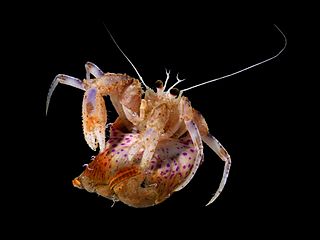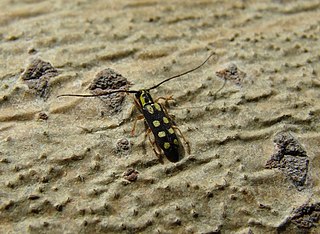
Lucius Livius Andronicus was a Greco-Roman dramatist and epic poet of the Old Latin period during the Roman Republic. He began as an educator in the service of a noble family, producing Latin translations of Greek works, including Homer's Odyssey. The translations were meant, at first, as educational devices for the school which he founded. He also wrote works for the stage—both tragedies and comedies—which are regarded as the first dramatic works written in the Latin language. His comedies were based on Greek New Comedy and featured characters in Greek costume. Thus, the Romans referred to this new genre by the term comoedia palliata or fabula palliata, meaning "cloaked comedy," the pallium being a Greek-style cloak. The Roman biographer Suetonius later coined the term "half-Greek" of Livius and Ennius. The genre was imitated by later generations of playwrights, and Andronicus is accordingly regarded as the father of Roman drama and of Latin literature in general; that is, he was the first man of letters to write in Latin. Varro, Cicero, and Horace, all men of letters during the subsequent Classical Latin period, considered Livius Andronicus to have been the originator of Latin literature. He is the earliest Roman poet whose name is known.

The Atelidae are one of the five families of New World monkeys now recognised. It was formerly included in the family Cebidae. Atelids are generally larger monkeys; the family includes the howler, spider, woolly, and woolly spider monkeys. They are found throughout the forested regions of Central and South America, from Mexico to northern Argentina.

The mantled howler is a species of howler monkey, a type of New World monkey, from Central and South America. It is one of the monkey species most often seen and heard in the wild in Central America. It takes its "mantled" name from the long guard hairs on its sides.

The Ecuadorian mantled howler is a subspecies of the mantled howler, A. palliata. It ranges from Panama through Colombia and Ecuador into northern Peru. The range limits between the Ecuadorian mantled howler and the golden-mantled howler are not entirely clear. The Ecuadorian mantled howler replaces the Golden-mantled howler in either extreme eastern Costa Rica or western Panama. The Ecuadorian mantled howler differs from the golden-mantled howler primarily by being paler, with a more yellowish mantle.

The golden-mantled howler is a subspecies of the mantled howler, A. palliata. It ranges throughout much of Central America, in Guatemala, Honduras, Nicaragua and Costa Rica, and possibly Panama. The range limits between the golden-mantled howler and the Ecuadorian mantled howler are not entirely clear. The Ecuadorian mantled howler replaces the golden-mantled howler in either extreme eastern Costa Rica or western Panama.

The Mexican howler is a subspecies of the mantled howler, A. palliata. This subspecies is found predominantly in forests between south eastern Mexico and north eastern Peru. Typical of its species, the Mexican howler monkey has a prehensile tail, a deep jaw, and a large pharynx which it uses to make characteristically deep and resonating howls. Mantled howler monkeys are known for forming unusually large cohorts averaging 14 members and sometimes extending to 40 members.

Fabula palliata is a genre of Roman drama that consists largely of Romanized versions of Greek plays. The name palliata comes from pallium, the Latin word for a Greek-style cloak (himation). It is possible that the term fabula palliata indicates that the actors who performed wore such cloaks. Another possibility is that the fabula itself is metaphorically "cloaked" in a Greek style. As in all Roman drama, the actors wore masks that easily identified which of the stock characters they represented.
Chlanidota palliata is a species of sea snail, a marine gastropod mollusk in the family Buccinidae, the true whelks.

Adamsia palliata is a species of sea anemone in the family Hormathiidae. It is usually found growing on a gastropod shell inhabited by the hermit crab, Pagurus prideaux. The anemone often completely envelops the shell and because of this it is commonly known as the cloak anemone or the hermit-crab anemone.

Saperdini is a tribe of longhorn beetles of the subfamily Lamiinae.

Menesia is a genus of longhorn beetles of the subfamily Lamiinae, containing the following species:
A fabula togata is a Latin comedy in a Roman setting, in existence since at least the second century BC. Lucius Afranius and Titus Quinctius Atta are known to have written fabulae togatae. It is also treated as an expression that functioned as the overall description of all Roman types of drama in accordance with a distinction between Roman toga and pallium. There are recorded sources that cite how this drama could be obscene and moralistic.
Menesia bimaculata is a species of beetle in the family Cerambycidae. It was described by Stephan von Breuning in 1954. It is known from Borneo.
Menesia burmanensis is a species of beetle in the family Cerambycidae. It was described by Stephan von Breuning in 1954.
Menesia nigriceps is a species of beetle in the family Cerambycidae. It was described by Per Olof Christopher Aurivillius in 1903. It contains the varietas Menesia nigriceps var. inhumeralis.
Menesia nigricornis is a species of beetle in the family Cerambycidae. It was described by Per Olof Christopher Aurivillius in 1913. It is known from Borneo.
Menesia walshae is a species of beetle in the family Cerambycidae. It was described by Stephan von Breuning in 1960. It is known from Java.

Menesia bipunctata is a species of beetle in the family Cerambycidae. It was described by Zoubkov in 1829, originally under the genus Saperda. It has a wide distribution in Europe and Asia. It measures between 6 and 9 mm. It feeds on Juglans regia and Frangula alnus.

Menesia sulphurata is a species of beetle in the family Cerambycidae. It was described by Gebler in 1825, originally under the genus Saperda. It is known from Mongolia, Kazakhstan, Japan, China, and Russia.
Menesia transversenotata is a species of beetle in the family Cerambycidae. It was described by Heller in 1924. It is known from the Philippines.










